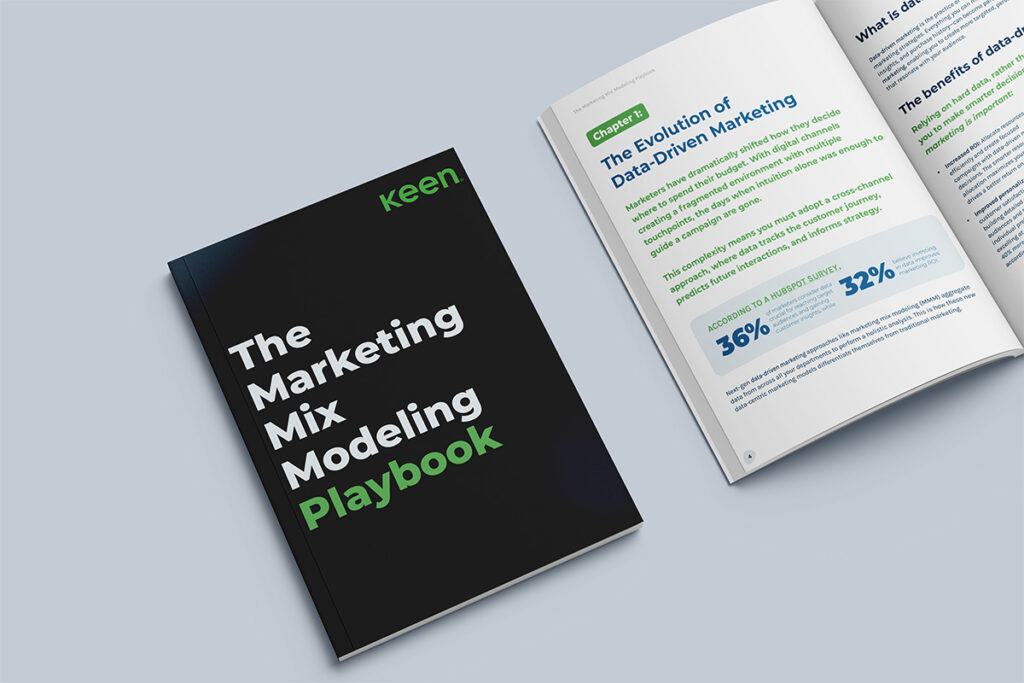The old approach to making marketing decisions was fairly uncomplicated, and essentially consisted of investing money into traditional channels such as broadcasting, print, and direct mail. However, the rise of the digital era in the early aughts ushered in a new normal with an explosion of digital channels that quickly started to take prevalence over the more traditional ones and disrupted the marketplace. As a result, the evolution and complexity that has emerged in marketing, the environment, and across media has brought a series of new challenges to brand managers and organizations.
In the third installment of our interview series, ReveNew, Keen CEO Greg Dolan sat down with Liz Mayer, partner, omni-channel commerce at The Partnering Group, to discuss why putting strategy before structure is fundamental when thinking about shifts in company organization in an age of disruption.
Here are three big takeaways you don’t want to miss.
Build a clear, actionable plan
One of the most rapidly changing spaces in the marketplace is that of retail media–both in terms of its emergence and the amount of budget dedicated to it. Most CPG companies have relatively mature shopper market organizations that are used to doing their own thing, meaning many of those teams report to sales and not brand. But with the emergence of retail media, not only are the tools, targeting, and capabilities within the retailer space (and shopper marketing teams) enhancing, you also have the digital shelf requiring brands to think differently about how they build. So the scope of brand management is also changing and decision-makers need to spend the same energy (if not more) on their digital presence as they do on their packaging, or physical, in-store one.
Implementing organizational change involves a lot of moving parts and can be difficult to navigate and execute without a cohesive understanding of the strategy driving it. By putting strategy before structure, companies can align on big questions, like where and how they want to grow in the future, which facilitates a smoother transition. Because ultimately, when you’re clear on the work, then you can be clear on the jobs needed to be done, and then you can be clear where the strategy needs to evolve.
Change management, or transformation, always requires a level of transparency and context. First, in making certain that senior leaders understand and embrace where they are (and aren’t) in relation to their ambitions and ability to remain competitive; and then, in ensuring these leaders are equipped with a roadmap to transform. From there, it comes down to galvanizing support for that agenda through the organization and making sure individuals have a clear understanding of what the change is, why it is happening, and how it will impact them.
Get a holistic view of your organization
A good portion of how a brand shows up digitally is related to how they’re leveraging their retail digital media and ensuring they have a holistic approach to their business. In essence, there is no lower and upper funnel anymore, but rather a robust commerce ecosystem. So organizations have to shift from segmented efforts to a holistic approach and move beyond seeing retail media as a tactical element to how the properties and engagements within those spaces (i.e., Walmart or Target) are working in relation to how they could be working somewhere else (i.e., NBC Media).
It can be difficult to have a unified approach to your marketing strategy when the budget is separated between sales and the CMO with different teams reporting to different leadership–especially now, with new distribution channels and a booming e-commerce. To be successful in today’s landscape, marketing organizations need to understand their business from a customer and category perspective as well as how they want to engage with their shoppers, and bring those together to make the right decisions. This requires different ways of working, different strategies, and ultimately, different tools and resources.
At times, it can feel like big retail media has all the leverage over CPG brands. However, marketers have the chance to take some back in the relationship by using data at the holistic level to justify spend and use every dollar to its full potential. Employing an omni-channel approach is key to making this a reality. To have a holistic view of your marketing mix across different channels, you need to be more agile and sophisticated with measurement–and have the tools necessary to look across the board and know what dollars are going to be working the hardest and where to best support your business growth goals. Otherwise, you’re essentially wasting money.
Maximize value with an omni-channel approach
For many brand managers, the focus always comes back to what you are trying to achieve as a business and how to best leverage the dollars available to you to reach your goals. Again, an omni-channel approach is going to provide the best perspective on how all the dollars work together and halo off of each other. This visibility into interaction effects is a crucial piece of the puzzle.
Having an omni-channel approach requires some cross-pollination between teams because you need marketers that understand sales, marketers well-versed in the digital shelf, and then you also need shopper marketers to understand media. It’s critical to ensure anyone who is having touch points with the customer, shopper, and consumer ultimately understands these fundamentals at all levels.
When talking about change management, the formal competency training is critical, even at a foundational level, because it makes the business decisions and strategic implementation that much better. It also allows you to continue to develop the talent in accordance to where you want your growth to come from and where your business goals are at. And when talking about retail media in relation to structure, one of the main principles is to ensure you have an end-to-end integrated marketing organization with the competencies to understand both in-store and digital.
Don’t be afraid of change
There is no optimal structure when it comes to managing retail media and being able to support the business holistically. It ultimately depends on several factors, but one of the obvious ones is the size of the company. While some brand managers may think along the lines of, we’re too big to change or we’re too small and don’t have the resources, these perceived limitations can actually be enablers as long as you are clear on your strategy and where you are going to win.
The more siloed, complicated, and matrixed structures are, the harder it is for companies to support retail media and other emerging spaces because there are so many different touchpoints. Alternatively, the more integrated the strategy, activation, and ultimately, the measurement within an organization, the better the results. Essentially, when it comes to effectively implementing and supporting change in your marketing plan, it comes back to strategy and the structures. And from there, staffing and getting the right talent on board to be able to deliver the strategy that will help your business reach its growth goals.
Keen to learn more? Check out the interview here.





